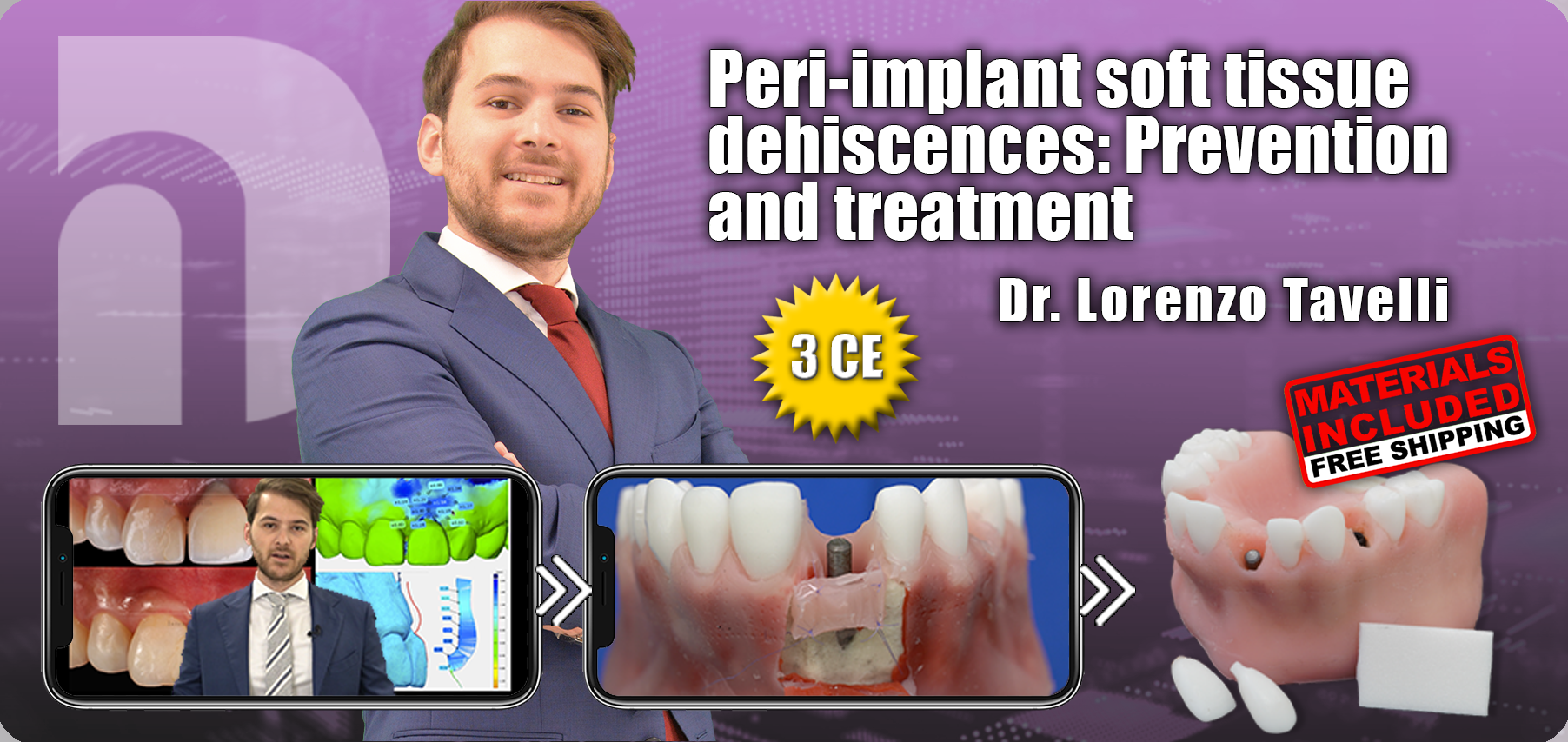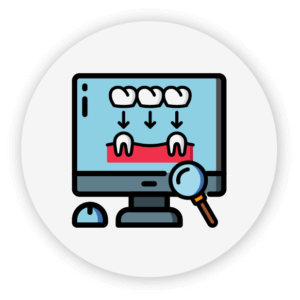Peri-implant soft tissue dehiscences: prevention and treatment
 General Information
General Information
Date: Published on 11/11/21
Last review: 14/06/24
Location: Online
Teaching method: Self-instructional (The student will have the opportunity to watch the pre-recorded lecture, and the pre-recorded workshop, and then practice at home with the materials that we will send him)
Continuing Educational Credits Awarded: 3CE
Dentalhow.online is an ADA CERP Recognized Provider.
ADA CERP is a service of the American Dental Association to assist dental professionals in identifying quality providers of continuing dental education. ADA CERP does not approve or
endorse individual courses or instructors, nor does it imply acceptance of credit hours by boards of dentistry.
Dentalhow.online designates this activity for 3 continuing education credits.
*You can watch the lecture & workshop as many times as you want, there isn’t any kind of expiration date*
*Dr. Lorenzo Tavelli has no conflicts of interest related to this course. He does not have any relevant financial relationships to declare.*
If you wish to ask a question, share a clinical case relevant to the course topic, or request additional information regarding the scientific content, please feel free to contact us at info@dentalhow.online
If you require any technical assistance or support, please feel free to send a message by using the green chat box located on the right side of the main screen, this will send you directly to our WhatsApp number where you’ll be attended.
 Abstract
Abstract
Dental implants are reliable tools for replacing missing dentitions. Nevertheless, several complications of implant therapy have been observed, including esthetic nightmares. Peri-implant soft tissue dehiscences/deficiencies include several conditions that can be characterized by the exposure of the metallic components of the dental implants in the oral cavity and/or by an implant-supported crown longer than the contralateral homologous natural tooth. Several risk indicators predisposing to this condition have been identified, including limited keratinized mucosa width, mucosal thickness, lack of buccal bone, etc.
This lecture will focus on the prevention and treatment of peri-implant soft tissue dehiscences, with a particular focus on the selection of the most appropriate surgical approach for each scenario in order to obtain long-term stable and esthetic outcomes.
 Learning objectives
Learning objectives
- Learning the definition and classification of peri-implant soft tissue dehiscences
- Reviewing the risk indicators leading to implant esthetic complications
- Discussing the most appropriate surgical approaches based on the type of peri-implant soft tissue dehiscence
 Course Content
Course Content
- Online Pre-recorded lecture | 1 h 11 min
- Online Pre-recorded workshop | 1 h 14 min
- BoneModel + Demo Collagen Matrix
IMPORTANT – Experience in this area is recommended to ensure a good understanding of the course content.
TAXES AND SHIPPING INCLUDED
DIFFICULTY – MEDIUM
*All the demo components are produced by BoneModels only to be used on these models. THE DEMO COMPONENTS ARE NOT SUITABLE FOR HUMAN USE.*
*We only send the components specified in the “Do It” segment, the rest of the material needed to perform the workshop (such as drills, blades, sutures, etc) will be provided by the student.*
 Why should I take this course?
Why should I take this course?
Lack of expertise: Many dental professionals may not have specialized knowledge in the area of peri-implant soft tissue dehiscences, which can lead to improper treatment and poor outcomes.
Inadequate treatment: Without proper training, treatments for peri-implant soft tissue dehiscences may not be as effective, leading to recurring or worsening symptoms and increased risk of implant failure.
Improved patient outcomes: By taking a course on peri-implant soft tissue dehiscences, professionals can learn about the best practices for preventing and treating this condition, leading to improved patient outcomes and better overall care.
Better patient satisfaction: With improved outcomes, patients are more likely to be satisfied with their treatment and experience less discomfort, which can lead to increased patient loyalty and positive word-of-mouth recommendations.
Increased marketability: As more and more patients seek out dental professionals who specialize in the prevention and treatment of peri-implant soft tissue dehiscences, taking a course in this area can increase a professional’s marketability and competitiveness in the field.





